If you’re looking to get fitter, trimmer and lighter – not to mention healthier – then cycling is a great way to lose weight.
Cycling for weight loss is efficient, enjoyable, easy to slot into a busy day and, best of all, has emotional and mental benefits as well as physical ones. What’s not to like?
In fact, if an activity is enjoyable, studies show you are much more likely to stick with it.
You may already be at a healthy weight but want to become a fitter, faster and better cyclist.
If so, losing weight can help if your power-to-weight ratio is a limiting factor, for instance if you tend to get dropped on climbs.
But it’s important to consider if you need to lose weight at all. Losing weight can compromise cycling performance, such as maximal power, which is critical to improving your sprinting.
If you have an underlying health condition or any other concerns before starting a new weight-loss plan, you might want to consider visiting your doctor.
Diet and training science has moved on
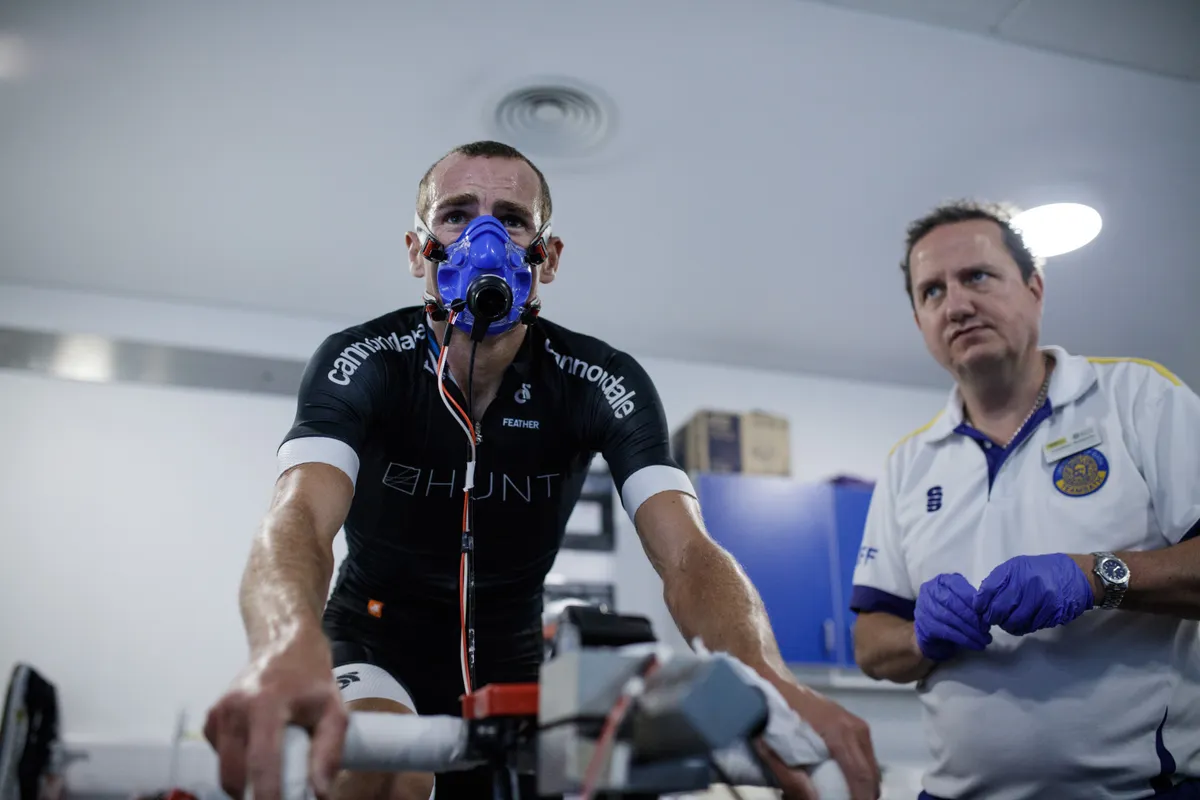
Before we delve into how to lose weight through cycling, it's worth acknowledging diet and training science has moved on in recent years.
Matt Fitzgerald, author of Racing Weight: How to Get Lean for Peak Performance, says endurance sport diet and training science has changed in recent years.
He stands by the premise of his seminal 2009 text – that body weight and body composition matter in cycling – but says it can be a tricky issue.
“Everything I talk about is science-based, so if you’re interested in [weight loss] do it the right way, not the wrong way,” says Fitzgerald.
13 tips to lose weight through cycling
Be realistic and play to your strengths
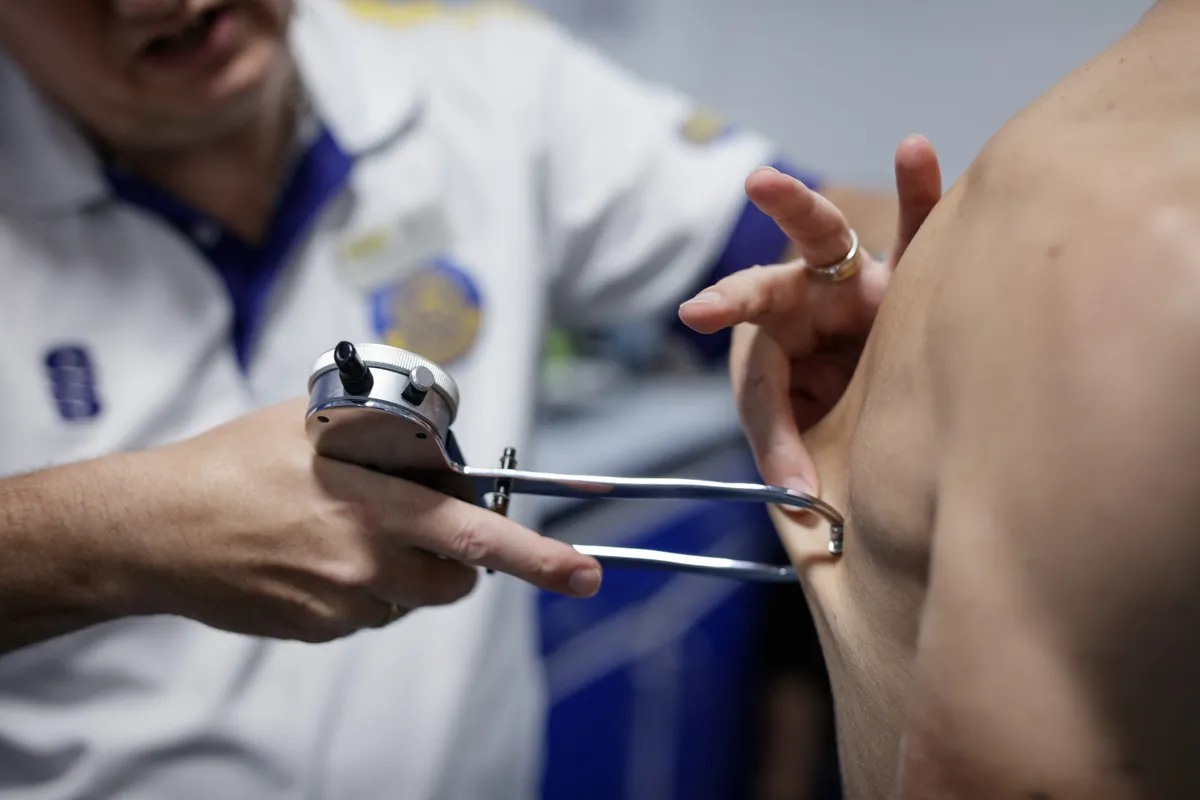
You can choose a target weight using Body Mass Index (BMI) as a guide. This is based on your height-to-weight ratio, and is used by many medical professionals. BMI is good for identifying a healthy target weight to aim for.
You can use an online tool such as the NHS BMI checker to identify a healthy weight for you. BMI is far from a perfect metric, but it’s a good place to get you started.
A better alternative is to aim for a target body fat percentage. A healthy man would typically have a body fat percentage of 15 to 18 per cent, and a woman of 25 to 32 per cent.
A man who trains and rides regularly can reach a body fat percentage of 8 to 10 per cent and a woman training and riding regularly of 24 to 28 per cent.
Buying weighing scales that will measure body fat percentage could be a good investment.
Your ideal weight for cycling may not be as light as possible. So before setting a weight-loss target with the aim to ride faster, again, make sure it’s realistic and will actually suit your riding characteristics.
A 2023 study in the Journal of Women's Sports Medicine says the emphasis on lower body weight in cycling means the risk factors for Low Energy Availability are prevalent in cycling.
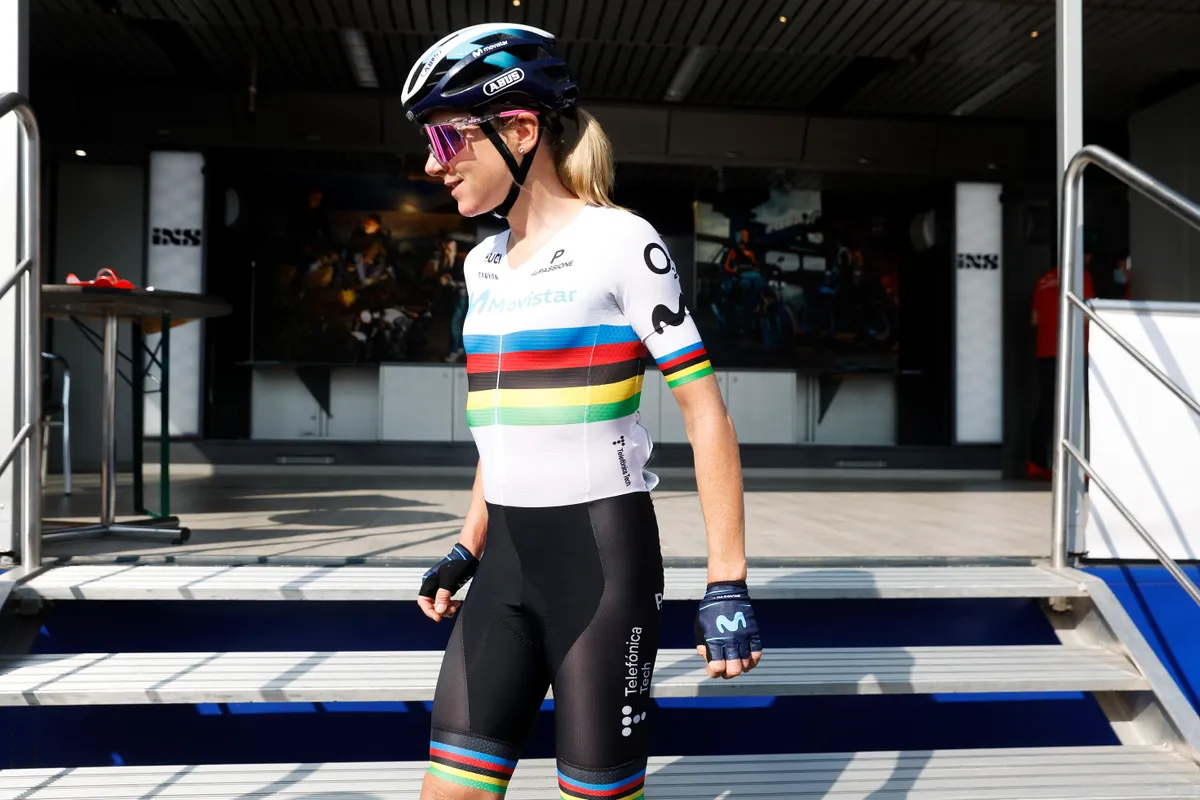
Alan Murchison, author of The Cycling Chef on the Go, The Performance Chef books and nutritionist with Specialized Factory Racing, says: “If you’ve got a 75kg frame, going down to 60kg just isn’t going to happen."
If you’re more heavily set, you’re better suited to riding fast on the flat than uphill. As an example, Murchison says Peter Sagan is no more likely to win a Grand Tour mountain stage than Egan Bernal is a cobbled classic.
Also, remember that the body composition of elite athletes isn’t achievable for amateurs like ourselves. Experts plan their every meal and training session.
“They don’t have to go to work, do the school run, stand in the playground full of snotty kids or go to an office full of people coughing," says Murchison.
“They are so on the edge of being unwell. If they are running six or seven per cent body fat, they are not doing the school run.
“You have got to be realistic about what’s achievable for you and your body type.”
Aim for a rate of weight loss of up to 1kg per week
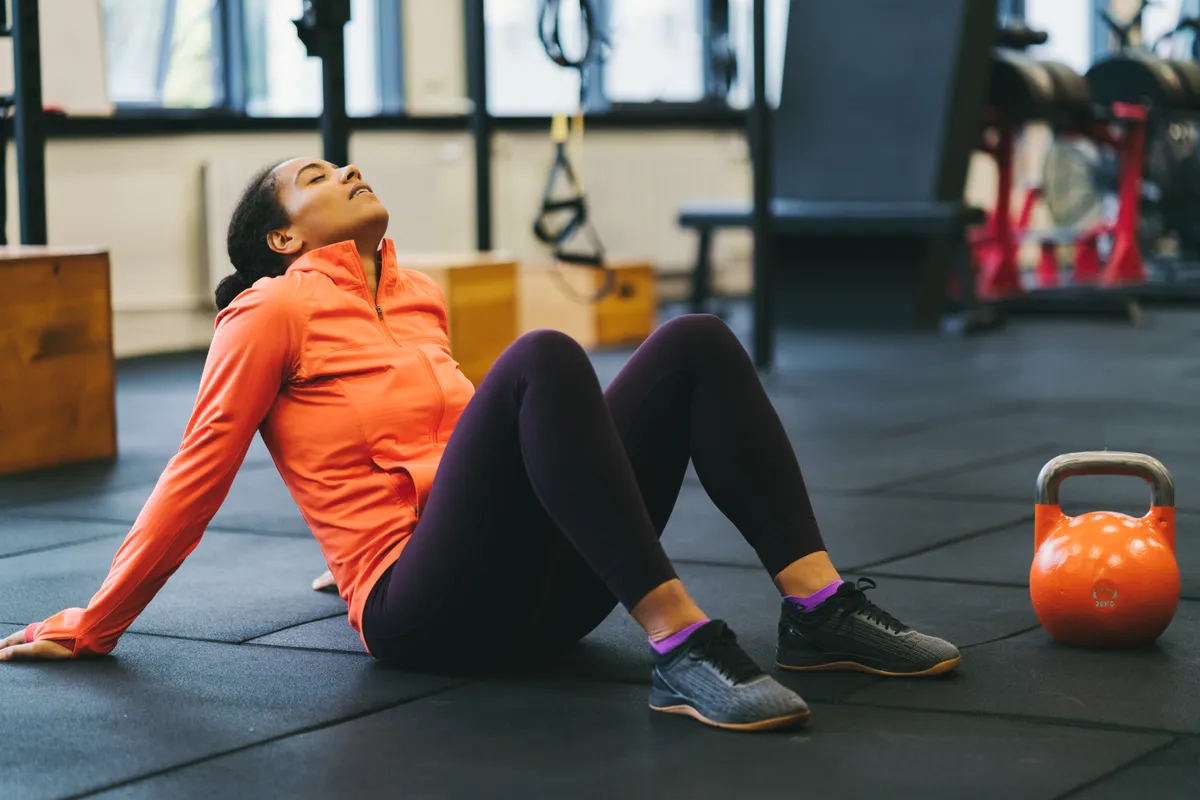
“For most people, if they have an hour a day, and they are happy doing an hour a day of exercise, then they can expect to lose a kilo a week,” says Andy Wadsworth, a personal trainer and coach.
However, Dr Emma Wilkins and Tom Bell, of High North Performance coaching, suggest an upper weight-loss limit of half a kilo or one pound a week.
Losing weight quicker than that for longer than several months can lead to RED-S, or relative energy deficiency in sport.
Protracted energy depletion can lead to “impaired physiological function”, including menstrual health in women and bone density in both sexes.
Don’t diet
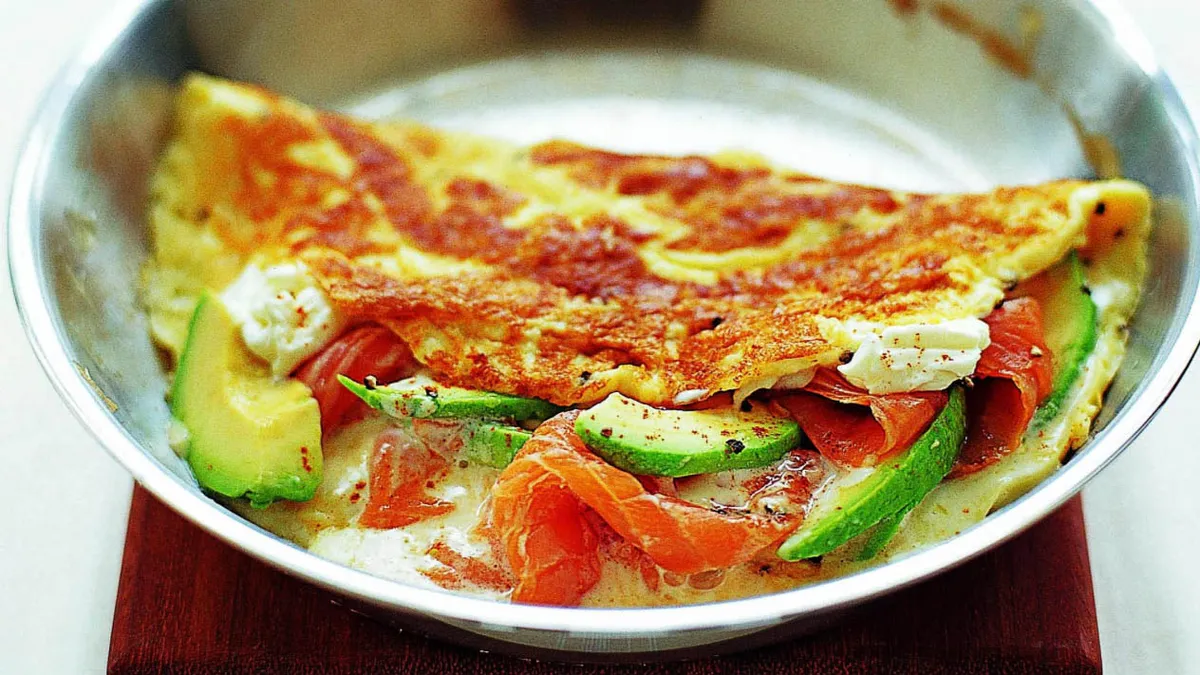
Old and new-fangled diets alike cut out certain types of food to lower calorie consumption to below your expenditure.
However, eliminating macronutrients such as carbohydrates or fats is bad for health, according to Murchison.
“I’m not a great fan of exclusion diets – you need fat, you need carbohydrate, you need protein," he says.
“To take out any food group is probably detrimental to health.
“In the short term, you might lose that weight but it will come back on."
A better method, Murchison believes, is to aim for a 500-calorie deficit on your easier days.
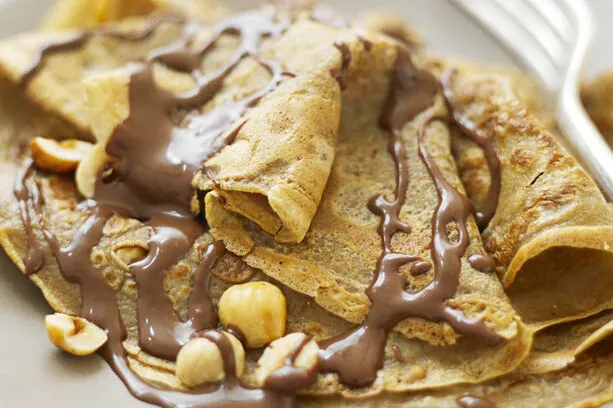
To do so, he advises having a little less of every type of food without being too restrictive.
Murchison says elite athletes don't always follow a strict diet. "They’ll eat junk food, they’ll eat snacks, treats, crisps and Haribo," he explains.
“All of those things are important, it’s all about balance."
Murchison says some reductions could be 75g dry weight of rice rather than 100g, five per cent fat yoghurt instead of full-fat yoghurt or having a teaspoon of honey not a tablespoon.
Soon, these smaller portions equate to a 500-calories deficit, but “don’t be greedy and go for 800 calories”, he cautions.
A large calorie debt can lead to hunger, feeling rubbish on the bike and eventually over-eating.
On harder days, a big calorie deficit will “bite you on the arse”, according to Murchison.
Once you know how to train with power, you can pinpoint days that require more food. A power meter measures your kilojoules expenditure (the amount of work you’ve done), which equates to total calorie burn.
Neither expert recommends habitually counting calories. Murchison believes it’s too time-consuming, while Fitzgerald argues calculations will never be accurate.

They agree it’s better to occasionally do a ‘dietary audit’ where you log what and how much you eat for three days in a cycling app such as MyFitnessPal.
“As an exercise, doing the maths is okay, but the maths isn’t accurate. It gets you paying attention,” says Fitzgerald.
Scientists determine the calorie content of food for nutritional labels by incinerating the product in a bomb calorimeter and measuring how much energy is released.
“That’s not how a human being eats and digests food – we’re not incinerating it, so those numbers you see on the labels are not really true, they’re in the general ball park.
“And it’s the same for calorie expenditure, the amount of calories you burn won’t equal the calculation,” Fitzgerald adds.
As a result, he believes “it’s a fool’s errand to try those calculations because it’s incredibly complex.”
He adds that the way a food is cooked or prepared influences how many calories you absorb from exactly the same food. For example, you'll absorb fewer calories from a whole apple than apple sauce.
What’s more, calorie studies in controlled environments such as metabolic chambers cannot be replicated in real life.
Rather than aiming for a 200 to 300-calorie deficit you won’t be able to knowingly achieve, Fitzgerald says it’s better to ask: “what am I doing now and what changes can I make that will sensibly reduce my calories intake and/or increase my calories expenditure?”
Let's say your weight, diet and exercise habits have been steady for the past six months.
“It’s a no-brainer that if you then increase your diet quality, reduce mindless eating and increase activity level, you will end up in a deficit and lose weight, it remains to be seen how much,” Fitzgerald says.
Fuel for the work required
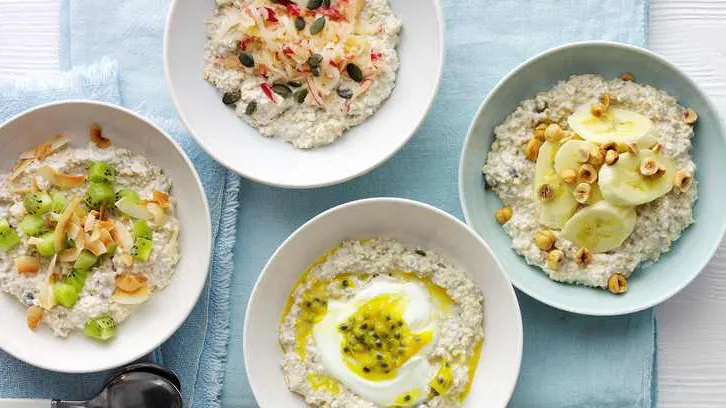
Despite the difficulty of estimating your energy expenditure and intake, your training load should roughly reflect your food intake.
“The biggest mistake people make is either over-fueling or under-fueling," says Murchison.
“If you were driving from Bath up to Edinburgh, you’d never leave with a quarter of a tank of fuel. It would be pointless," he adds.
On easy days, Murchison recommends just riding with water. But if you’ve got a “god-awful session on the turbo, like two times 20 minutes sweetspot, you’re going to need carbohydrates before,” he says.
You’ll also need to think about what to eat and drink to recover from a hard ride.
Your macronutrient balance doesn’t need to be all that exact, but Murchison says his carbohydrate as a percentage of total calories intake drops to 50 per cent on easier days and increases to 70 per cent on hard days.
Whether you should opt for sports nutrition products or ‘real food’ for fuel during a long ride depends on its purpose – “do you want to complete the ride or compete in the ride?” as Murchison puts it.

Murchison says he powers a 100-mile time trial with energy gels and energy drink. But on a five-hour leisurely ride, he’ll eat bananas and homemade flapjacks.
Failing to eat enough on rides of this length undermines weight-loss goals and performance, Murchison explains.
“You’ll come in, eat 2,000 calories worth of sh**e over the next few hours, so it’s a false economy.
“If you don’t take enough in on the bike, you end up riding like a three-legged donkey,” he says.
Echoing Murchison, Fitzgerald says under-eating is more dangerous than over-eating for endurance athletes such as cyclists.
“Over-eating isn’t good, but under-eating is worse.
“There is more and more research on RED-S: relative energy deficiency in sport.
“If you over-eat just slightly, you have plenty of energy for your workouts, you have plenty of raw materials for recovery and adaptation,” he adds.
The only downside is you’ll weigh more than your optimal racing weight.
On the other hand, under-eating can leave you under-fueled, hampering workouts, recovery and your immune system. You’re more likely to get injured too.
When athletes want to lose weight, Fitzgerald tells them to “proceed with caution and do things by the book – starvation, super-intense restrictiveness with your diet is not the way to go.
“It may make you feel good for a week as you lose weight quickly, but in the long run you’ll end up worse off,” Fitzgerald explains.
High-intensity workouts are best for weight loss

Traditionally, riders try to lose weight while doing base training in the winter months.
The thinking goes that it’s easier and safer to reduce carbohydrate intake while doing high-volume, low-intensity riding where fat is the body’s primary fuel source.
As Murchison writes in The Cycling Chef: Recipes for Performance and Pleasure, opting for a 10 per cent calorie deficit at certain times of year will enable you to lose weight while training effectively, but a deficit will make it almost impossible to complete high-intensity sessions.
However, Fitzgerald says the optimal way to lose weight by cycling is to perform a block of regular high-intensity interval training.
Burning fat on the bike by riding in zones one and two of your training zones is great for fitness, but not that efficient for weight loss, he explains.
In comparison, shorts bursts above your functional threshold power in zones six and seven burn more calories per minute and at a higher rate after the workout. This is due to excess post-exercise energy consumption (EPOC), which can amount to 6-15 per cent of net total energy cost of a punchy workout, according to a 2005 study.
For a competitive cyclist, this fat-shedding block should precede your transition from off-season to race-focused training. Or, if you don’t race, do it when you’re not training really hard.
It shouldn’t exhaust you – the intervals don’t need to be the long VO2 max intervals you do in racing season.
Instead, Fitzgerald suggests three to four interval days a week, depending on your tolerance.
An example session is a warm-up followed by 10 or 12 times 30 seconds and a cool down. Do a recovery ride the next day and more intervals the day after.
It’s also a good time to do more strength training, and eat fewer carbohydrates and more protein to accentuate fat loss.
Fitzgerald advises caution when taking this short-term approach, which isn’t ideal for losing a large amount of weight, for example 20kg.
“It is threading the needle in terms of efficiently losing weight without over-training at a time in your year when you don’t want to be going too deep,” he adds.

Aside from winter intervals, there are few better ways to fit in quality work than cyclocross racing.
You’ll ride flat-out for up to an hour on muddy technical courses. Your legs and lungs will burn as you accelerate out of bends and up banks.
But laps will fly by, making it much less bleak than slogging through interval sets on your own. The atmosphere is competitive, yet inclusive and cyclocross skills will transfer to tarmac.
If you don’t fancy doing this outside or the weather is bad, there’s always cycling indoors. It might not be as much fun as riding outside, but the best smart trainers and turbo trainer workouts allow you to smash a session when it’s lashing with rain.
Indoor cycling apps, such as Zwift, make the experience more realistic – and, dare we say it, fun – than ever.
Other apps, including Wahoo RGT, Rouvy and TrainerRoad also have workouts and training plans with plenty of interval sessions to choose from.
Moderate volume
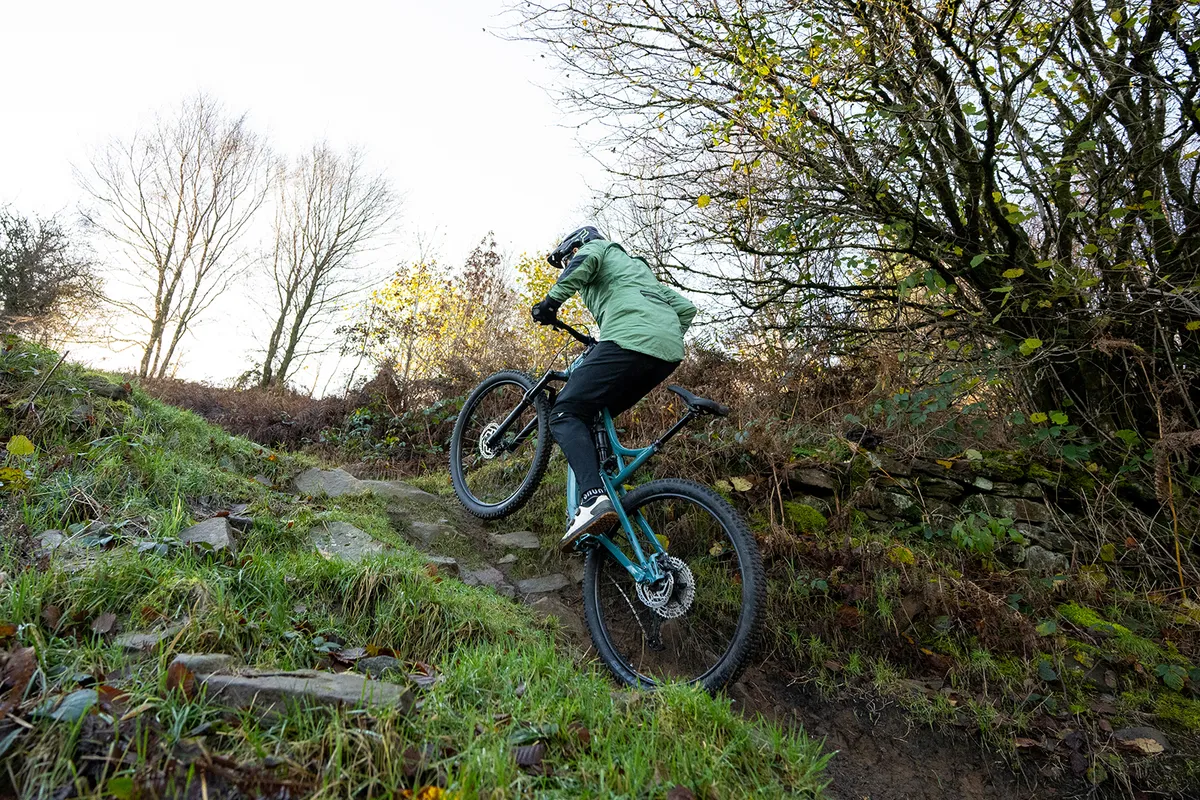
Fitzgerald believes the law of diminishing returns applies to training volume and “you can more or less ignore” trying to maximise calorie expenditure.
“It’s counterintuitive because you’d think the more calories you burn the more weight you’ll lose,” he explains.
But the complex relationship between training, metabolism and eating means an extra hour of pedalling doesn’t necessarily lead to additional weight loss.
Fitzgerald says appetite tends to increase in response to raised activity levels, but this is dependent on the person.
“You will tend to get less of a compensation effect with your eating if the overall training is low and a fair amount is at high intensity,” he adds.
Rather than guessing or presuming how this compensation effect works for you, he says it’s best to follow a simple process: adopt a simple training regimen and improve your diet, and then see what happens.
Commute to work by bike

One of the brilliant things about cycling is that it’s also an efficient form of transport, so switching your commute to two wheels means you’ll be getting in a regular amount of exercise in time that you would have spent travelling anyway.
Commuting by bike can have a huge impact on weight loss. A 2015 study by the University of East Anglia and the Centre for Diet and Activity Research showed that people who switched to cycling from driving or public transport lost on average 7kg (1st) over the course of a year when riding 30 minutes each way.
You can further capitalise on your commute with effective ride to work workouts, including the high-intensity intervals Fitzgerald advocates.
Cycling also helps improve your concentration, creativity and memory, so you’re also likely to be more productive when you get to work.
Aerobic exercise, including cycling, has been found to reduce anxiety and stress levels.
Get plenty of sleep
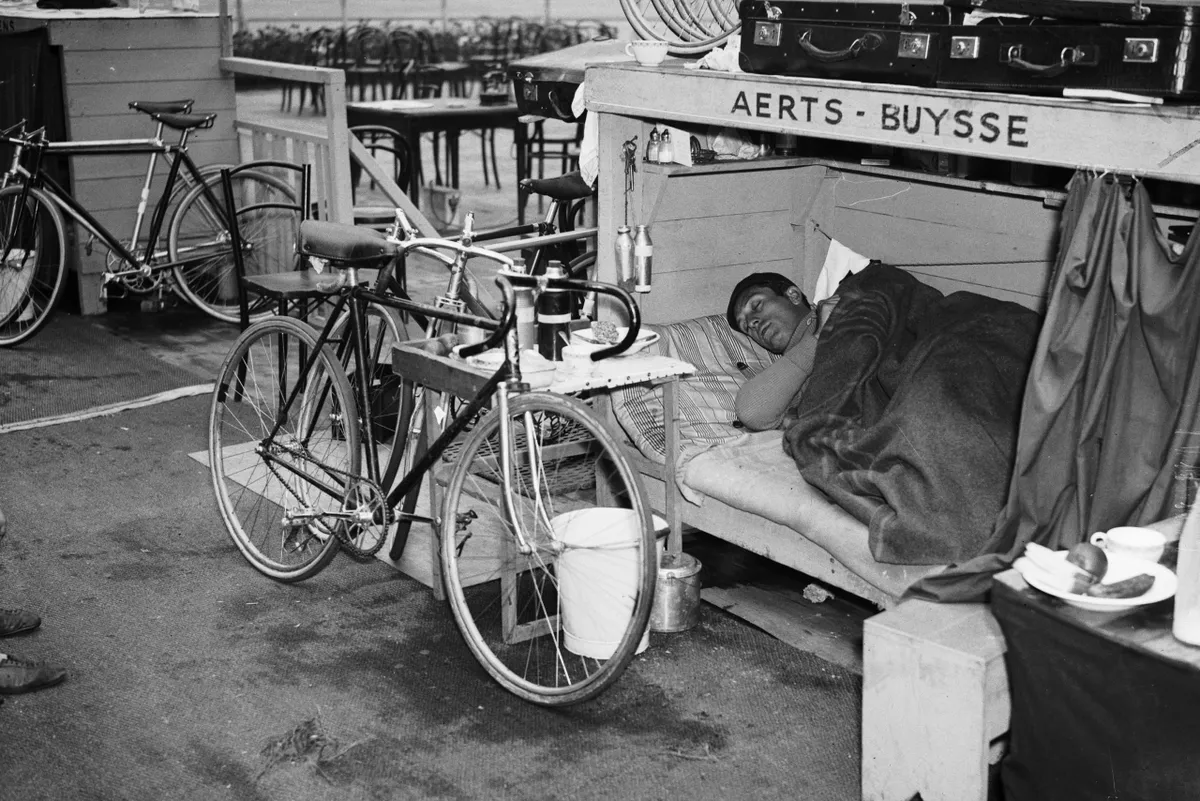
Sleep is the unsung hero of weight loss. Studies have shown that people who get six to eight hours of sleep a night are much more successful at losing weight and keeping it off. They also tend to be less stressed.
Research has indicated that people who don’t get enough sleep at night are more prone to feeling hungry and less likely to feel satiated when they eat.
And of course, a good night’s sleep is essential to help the body repair and build muscle after each day so you are ready for the next.
It sounds simple, but it’s important; aim for a quality sleep of around seven hours every night to give yourself the best chance of losing weight.
Keep track of your progress

Keep motivated and monitor your progress by recording it as you go.
“Don’t be disappointed if your rate of weight loss decreases.
“In the first week, your weight might go down every day, but in the fourth week that is not the case anymore,” says Fitzgerald.
If you’re tracking your progress using your weight or body fat percentage, then measure yourself once a week, ideally at the same time of day. First thing in the morning, after you’ve been to the toilet, is a popular time.
If you use Strava or a similar route tracker, you’ll be able to see your fitness improving as you progress – you’re likely to get faster along certain segments, which gives a great sense of achievement.
In conjunction with training apps such as Wahoo SYSTM, you could also keep a training diary.
Clothes are also a great way to check how you’re doing. If you’ve got a favourite item you want to fit into, or something you currently wear, check back every couple of weeks to see how it fits on you.
Hit the weights
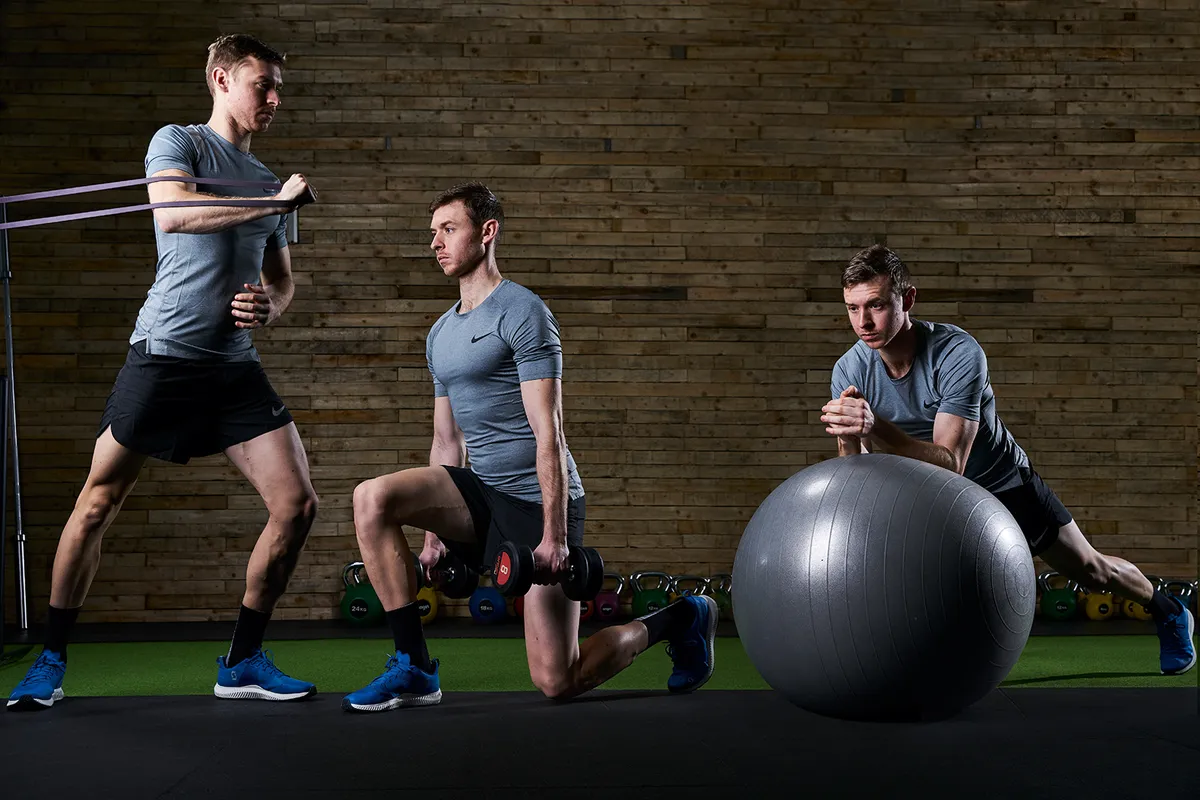
Fitzgerald says muscle is an “energy hog” because a kilogram of muscle requires more calories to sustain than equivalent fat.
The combination of strength training and a caloric deficit leads to nutrient partitioning.
“Your muscles turn protein into muscle tissue and turn fat and carbohydrate you consume into fuel that maintains that muscle tissue,” he explains.
A 2021 study found that reducing calorie intake in tandem with strength training ensures lean weight loss.
Beware of fasted training

Although fasted training used to be advised for losing weight through cycling, it’s actually better for fitness, according to Fitzgerald.
Fasted training is a kind of carbohydrate-restricted training where you ride in the morning before breakfast in a glycogen-depleted state. This obliges your body to burn fat for fuel, also known as “sleeping low”.
Fitzgerald says fasted training and intermittent fasting appeal most to athletes at greater risk of body dysmorphia and disordered eating. They can exacerbate their condition by adopting these methods.
“It’s really best to keep your focus on the basic, boring stuff if you want to lose weight.
“The benefits [of fasted training] are more fitness-specific. Could you use it as a weight-loss tool? You could, but I don’t recommend it,” he adds.
Improve diet quality

Fitzgerald recommends eating unprocessed versions of quality foods such as fruit, vegetables, nuts, seeds, oils, fish, meat and grains.
Unprocessed fish, as part of a balanced diet, is good for you and will help you lose weight, says Fitzgerald.
“You’re consuming fewer calories per unit of volume or satiety, so you’re not going hungry while eating fewer calories,” he says.
Fitzgerald says mindless eating – not stopping eating when you’re full – is a trap we often fall into.
Eating unprocessed food and avoiding mindless eating is a pretty quick way of minimising any energy surplus and it isn’t terribly onerous.
“Improving diet quality might require you to cut out calorie bombs you enjoy, like crisps, but it delivers more bang for your buck in terms of weight loss than exercise, ” he says.
Fitzgerald says this doesn’t mean you should set a rule of never eating processed food, but emphasises how switching to unprocessed equivalents is a “humane way of reducing calorie intake”.
Enjoy it!
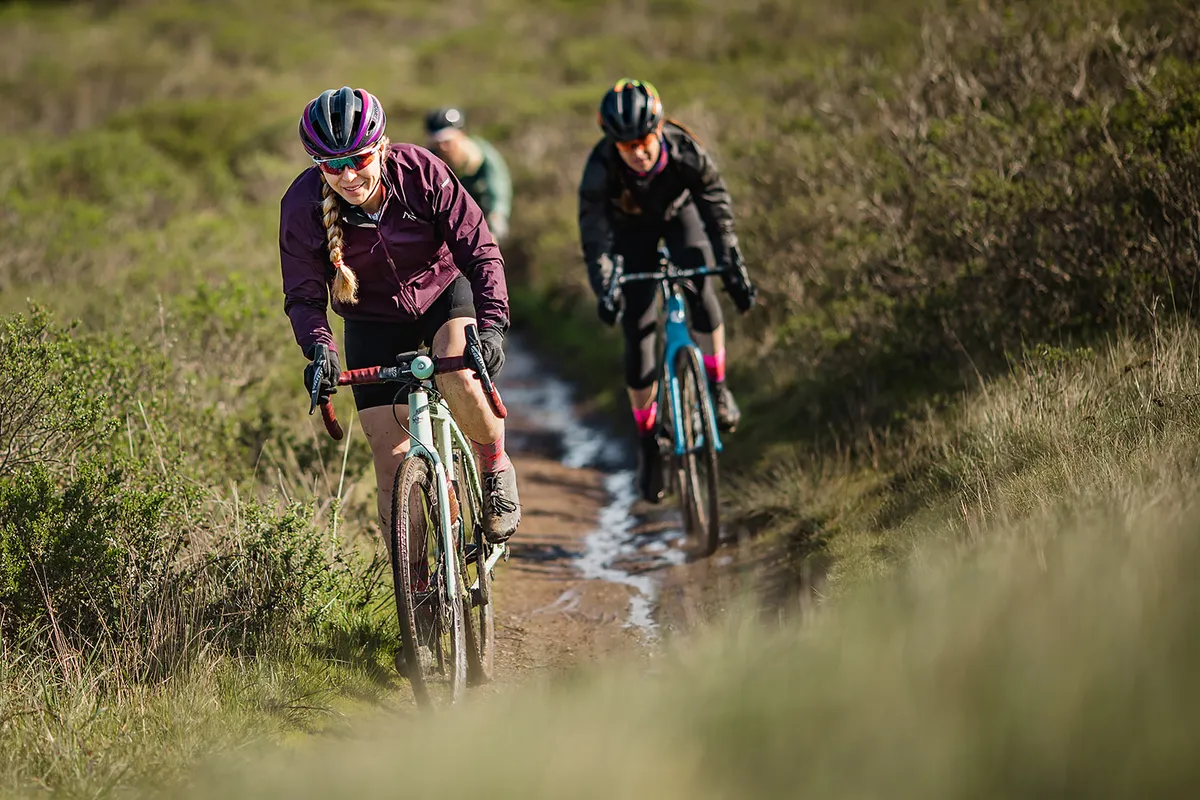
There are many reasons why weight doesn’t have to be a barrier to cycling. If you enjoy riding at your current weight, why change?
You don’t have to be built like a greyhound to savour speeding along country lanes, ripping along mountain bike trails, embarking on long contemplative rides on your own or enjoying social rides with friends.
Above all, cycling is about having fun and there are plenty of benefits beyond weight loss.
Cycling to lose weight: four key questions answered
Matt Fitzgerald, author of Racing Weight: How to Get Lean for Peak Performance and co-founder of 80/20 endurance sport coaching, answers these common weight-loss questions.
Is cycling good for weight loss?
Although aerobic exercise in general is better for weight management than loss, cycling can be as effective as running and Nordic skiing.
How much cycling do I need to do to lose 1kg?
When it comes to how many calories cycling burns, it’s impossible to say. Old estimates that you need to expend 3,500 calories for a pound of body weight loss are inaccurate. The leaner you become, the harder it is to lose additional weight.
Can I lose weight from cycling for one hour a day?
If you have a healthy diet and go from not cycling to cycling, you will lose a bit of weight.
Do I need to diet to lose weight?
The adage that you can’t out-train a bad diet holds true unless you ride five hours a day, for example.
It’s simplistic to say either diet or exercise is more important for weight loss, but better eating does deliver more bang for your buck.
